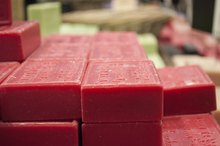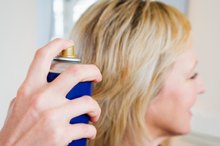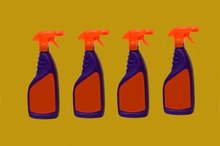What does fact checked mean?
At Healthfully, we strive to deliver objective content that is accurate and up-to-date. Our team periodically reviews articles in order to ensure content quality. The sources cited below consist of evidence from peer-reviewed journals, prominent medical organizations, academic associations, and government data.
The information contained on this site is for informational purposes only, and should not be used as a substitute for the advice of a professional health care provider. Please check with the appropriate physician regarding health questions and concerns. Although we strive to deliver accurate and up-to-date information, no guarantee to that effect is made.
About Allergic Reaction to Soap
Allergic reactions are the result of inflammation or irritation of parts of the body. Sometimes people may have an allergic reaction to soap, which typically only affects the skin. These reactions typically affect people who wash their hands frequently, such as health care workers. Although soap allergies rarely cause any serious medical problems, an allergic reaction to soap can cause severe discomfort and can be prevented or treated in a variety of ways.
Symptoms
An allergic reaction to soap is known as contact dermatitis 123. This condition is marked by a red rash which is typically painful and may also be itchy or cause blisters. This type of allergic reaction generally appears within 24 to 48 hours after the soap has touched the skin and may last for two to four weeks.
Causes
Baking Soda & Water for a Skin Rash
Learn More
A soap allergy is the result of one of the fragrances or other chemicals in the soap generating an immunological reaction. People with a soap allergy have an immune system that responds to a fragrance or some other chemical as if it is something infectious. This causes an immune reaction which results in the release of chemicals, which causes inflammation and itching. Allergic reactions may also be caused by sodium lauryl sulfate -- an ingredient in soap that strips your skin of its natural oils.
- A soap allergy is the result of one of the fragrances or other chemicals in the soap generating an immunological reaction.
- People with a soap allergy have an immune system that responds to a fragrance or some other chemical as if it is something infectious.
Complications
One of the dangers of allergies to soap is that scratching an itchy portion of the skin can actually cause additional inflammation and irritation, increasing the intensity of the itch. Repeated scratching can result in neurodermatitis which makes the affected parts of the skin thick and unusually leathery. Skin affected by neurodermatitis may become permanently darker, raw or red due to the scratching.
Diagnosis
Castile Soap & Eczema
Learn More
Soap allergies can generally be diagnosed by the appearance of the inflamed skin and by asking a person about any recent changes in soaps or detergents used. Confirmation of the diagnosis can be achieved using "patch" testing, in which patches containing chemicals suspected of causing the allergy are applied to the skin. The patches are removed 48 hours later to see if an allergic reaction has developed; an additional examination 48 hours after patch removal can be performed to look for any delayed reactions.
Treatment
The simplest way to treat an allergic reaction to a soap is to discontinue using any newly introduced soaps or detergents and to revert to brands, which have not caused an allergic reaction. Antihistamines can be taken orally to relieve the symptoms. Ointments which contain cortisone can also relieve itching and inflammation. Calamine lotion, cold compresses and milk/oatmeal baths may also relieve the itching.
- The simplest way to treat an allergic reaction to a soap is to discontinue using any newly introduced soaps or detergents and to revert to brands, which have not caused an allergic reaction.
- Ointments which contain cortisone can also relieve itching and inflammation.
Related Articles
References
- Contact dermatitis. (n.d.).
- Contact dermatitis. (n.d.).
- Contact dermatitis. (2011).
- Contact dermatitis. (2015).
- Contact dermatitis (allergic and irritant). (2015).
- Fonacier L, et al. (2015). Contact dermatitis: a practice parameter-update 2015. DOI:
- Mayo Clinic Staff. (2018). Contact dermatitis.
- The American College of Allergy, Asthma, and Immunology. Skin Allergies.
- Eichenfield LF, Ahluwalia J, Waldman A, et al. Current guidelines for the evaluation and management of atopic dermatitis: A comparison of the Joint Task Force Practice Parameter and American Academy of Dermatology guidelines. J Allergy Clin Immunol. 2017;139(4S):S49-S57. doi:10.1016/j.jaci.2017.01.009
- Smith AR, Knaysi G, Wilson JM, Wisniewski JA. The Skin as a Route of Allergen Exposure: Part I. Immune Components and Mechanisms. Curr Allergy Asthma Rep. 2017;17(1):6. doi:10.1007/s11882-017-0674-5
- Bernstein JA, Lang DM, Khan DA, et al. The diagnosis and management of acute and chronic urticaria: 2014 update. J Allergy Clin Immunol. 2014;133(5):1270-7. doi:10.1016/j.jaci.2014.02.036
- Siegfried EC, Hebert AA. Diagnosis of Atopic Dermatitis: Mimics, Overlaps, and Complications. J Clin Med. 2015;4(5):884-917. doi:10.3390/jcm4050884
- Fonacier L, Bernstein DI, Pacheco K, et al; American Academy of Allergy, Asthma & Immunology; American College of Allergy, Asthma & Immunology; Joint Council of Allergy, Asthma & Immunology. Contact dermatitis: a practice parameter-update 2015. J Allergy Clin Immunol Pract. 2015;3(3 Suppl):S1-39. doi:10.1016/j.jaip.2015.02.009
- Tilles SA. Allergic Skin Disease and the Practicing Allergist: Growing Unmet Need, New Science, and New Treatments. Immunol Allergy Clin North Am. 2017;37(1):xiii-xiv. doi:10.1016/j.iac.2016.10.002
Writer Bio
Adam Cloe has been published in various scientific journals, including the "Journal of Biochemistry." He is currently a pathology resident at the University of Chicago. Cloe holds a Bachelor of Arts in biochemistry from Boston University, a M.D. from the University of Chicago and a Ph.D. in pathology from the University of Chicago.









